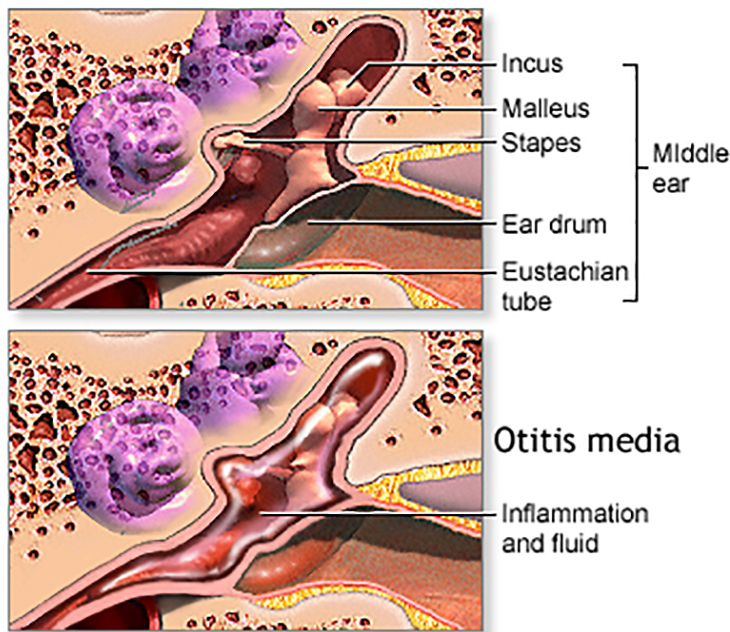Ear infection? Antibiotics may not be the answer
February 13, 2018

Before asking your child’s healthcare provider for antibiotics, consider seeing an ear, nose and throat (ENT) specialist to better understand treatment options for recurring ear infections.
“Typically, ear infections are a complication of a respiratory illness,” says Lon Petchenik, M.D., an Ear, Nose and Throat Specialist at Northwest Community Healthcare. “Kids may have a common cold or flu and then days later, start to complain of hearing loss or ear pain or they may tell you that their ear hurts, or their ears are popping.”
Younger kids will be crabby, fussy, not eating well, or tugging at their ears, he added.
Middle ear infections

There are two categories of middle ear infections, requiring different treatments: Acute Otitis Media and Otitis Media with Effusion – middle ear fluid.
“One-third of kids will have a middle ear infection by the age of three,” says Dr. Petchenik.
The middle ear is an air-containing cavity connected to the throat via the eustachian tube. When this tube becomes inflamed or doesn’t work properly, middle ear infections occur or fluid accumulates, according to Dr. Petchenik.
In kids, the incidence of middle ear infections goes down by age 7 or 8 as the eustachian tube and immune system matures. It is also less common in infants six months of age and younger.
Ear infections may be caused by viruses, bacteria or both. The American Academy of Pediatrics (AAP) explains that symptoms of ear infections may include: pain, loss of appetite, trouble sleeping, fever, ear drainage and trouble hearing. Another symptom may include more crying than usual, especially when lying down.
Middle ear infections often are treated with:
- Observation
- Oral antibiotics, when appropriate
- Eardrops (if tubes are present)
- Tympanostomy tubes
To minimize antibiotic side effects, AAP guidelines recommend parents with children meeting select criteria let children fight the infection on their own for 48 to 72 hours, then start antibiotics if they do not improve.
When used appropriately, antibiotics can offer relief from bacterial infections and reduce the chance of complications.
Tubes
“As a solution, one of the most common procedures we perform is surgically implanting pressure equalization or tympanostomy tubes,” says Dr. Petchenik.
More than 600,000 are performed annually in the United States.
The three most common reasons for tube implantation are:
- Recurring infections (five or more a year)
- Middle ear fluid that persists for three months or more
- Persistent middle ear fluid and recurring ear infections
“This painless, highly successful, five to 10-minute outpatient surgical procedure is done under general anesthesia,” Dr. Petchenik says.
How it works
“A small incision is made in the ear drum, maintained by an implanted tube that acts as an artificial eustachian tube, allowing the middle ear space to remain aerated,” says Dr. Petchenik.
This procedure automatically helps reduce the frequency of ear infections and hearing is immediately restored, often improving speech and language development.
“If an occasional infection develops once tubes are in place, topical drops then usually take care of the problem, often avoiding the need for oral antibiotics,” says Dr. Petchenik.
Need an appointment? Call Dr. Petchenik at 847-259-2530.